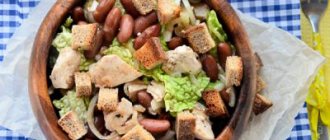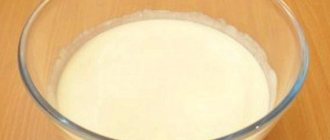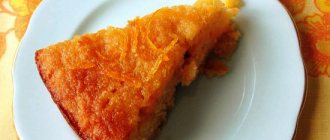Description
Marzipan is an ancient European and very tasty dessert that can not only be enjoyed, but also used to decorate cakes.
Notes on the history of the origin of marzipan do not indicate exactly where the product was first made. Scientists believe that its homeland may be France, Germany, Italy or Hungary. According to the first legend, in ancient times, when there was famine on earth, people made bread from ground almonds, since this was the only product that was used for bakery products. As for the second source, it states that marzipan was an effective medicine against nervous system disorders.
In the confectionery industry, there are three types of marzipan:
- white (used as a decoration for confectionery);
- yellow, or, in other words, almond glaze (obtained by coloring white marzipan yellow and used for filling fruit cakes);
- raw (used only for glazing sweet baked goods).
The main methods of preparing such a product are:
- hot (sugar syrup is used, which is poured into the chopped nut mixture);
- cold with or without eggs (this method involves chopping all the ingredients needed for cooking).
LiveInternetLiveInternet
Marzipan is a very tasty and healthy edible “plasticine” made from ground almonds.
Real marzipan is very easy to prepare at home. When preparing marzipan, it is advisable to use fructose. Marzipans are made from sweet almond kernels, but to fully develop the flavor, you need to add one bitter almond kernel for every 20-50 sweet almond kernels. Marzipans can be colored with food coloring in a variety of colors. The French king Louis XIV, the Prussian princess Louise Charlotte, and the German writer Thomas Mann were crazy about him and could sacrifice a lot for his sake.
And even the Mouse King from Hoffmann’s fairy tale agreed not to touch the Nutcracker in exchange for marzipan. This delicacy can work wonders both in a dream inspired by Ole Lukoje and in reality. MARZIPAN (German Marzipan, from Italian marzzapane - March Easter bread). A flexible mixture of powdered sugar and grated, powdered nuts, usually almonds. This mixture, where sugar makes up from one third to two fifths, gives a real, classic marzipan mass, so well formed without any gluing additives that candies can be stamped from it. Such marzipan candies can be glazed (with sugar, lemon, chocolate glaze) or left without glazing, which is better, as it does not distort the delicate taste of true marzipan.
About making marzipans
Marzipans are used for modeling a wide variety of confectionery crafts, which are either completely finished independent works of confectionery art, or decoration elements for a wide variety of edible products.
Marzipans are also used for coating confectionery products and as fillings for sweet pies. There are two main ways to prepare marzipan - with heat treatment and without heat treatment.
One of them,
with heat treatment
, takes a little longer, but marzipans of this type are easier to use, especially for sculpting various figures and for covering large confectionery products, because
they are both more flexible and tastier. The second method of preparing marzipans - without heat treatment
- is faster: the mixture is passed through a food processor.
But using these marzipans is more difficult. Usually, marzipan is prepared in the first way for modeling and for covering large pies, and in the second - for covering small pies or as a filling with which the pie is filled before baking. After the cake is covered with marzipan, it is left in a cool, ventilated place for a week. Marzipans that are too wet will affect the color of the glaze. Storing marzipans
Wrap the marzipans in cellophane or cling film (or place in a plastic bag) and place in the refrigerator or freezer. Before use, keep the mixture at room temperature and knead slightly to restore plasticity.
We recommend using: Basic MARZIPAN RECIPE with heat treatment for home cooking (according to V.V. Pokhlebkin)
Ingredients : – 0.5 kg of peeled sweet almond kernels, – 15 pieces of bitter almonds, – about 200 g of fruit sugar (fructose), – 1 tbsp. spoon of water.
Preparation
Scald the almonds, remove the skin, dry with the oven door open over very low heat for several minutes (avoiding not only burning, but also yellowing of the nuts!), then grind in a coffee grinder as finely as possible. Grind sugar (fructose) into powder and sift through a fine sieve. Mix the sugar and almonds thoroughly, preferably with a mixer, into a homogeneous mass. Place it in a porcelain cup and use a spray bottle to sprinkle just a spoonful of water (cold, boiled) into this mixture. It is better to do this together: one sprays, the other turns the mass, continuously, evenly. NOTE. To taste, you can add 50 g of washed and finely chopped raisins to the resulting mass, mix and pass everything through a meat grinder four to five times. After this, the marzipan mass is placed in a thick-walled metal bowl (with a thick bottom) and heated with constant stirring over very low heat (with the addition of a small amount of sifted powdered fruit sugar - from 20 to 50 g) until the mass is homogeneous and softened. When heating, avoid excessive overheating and burning!
OPTIONS FOR MARZIPAN MASS Option 1 (with heat treatment) Yield: 700 g
Ingredients : – 2 eggs, – 175 g of fructose (preferably) or powdered sugar, – 350 g of ground almonds, – 4 drops of vanilla essence, – 1 teaspoon of lemon juice.
Preparation
Lightly beat the eggs in a bowl. Mix sugar with powdered sugar and combine with egg mixture. Place the bowl over a pan of boiling water and cook until creamy, stirring. Take it off. Place ground almonds in a bowl, add vanilla essence, lemon juice and beat lightly with a spoon to form a soft paste. Place the paste on a work surface dusted with icing sugar and knead until smooth. Be careful not to overdo it or the oil will come out. NOTE. Marzipans prepared in this way should be used warm before they lose their plasticity.
Option 2 (without heat treatment) Yield: 900 g
Ingredients : – 1-2 eggs, – 2 yolks, – 225 g sugar, – 225 g fructose (preferably) or powdered sugar, – 450 g ground almonds, – 6 drops vanilla essence, – 2 teaspoons lemon juice.
Preparation
Mix 225g sugar and caster sugar in a bowl, then add ground almonds. Separately, mix 2 yolks, 2 whole eggs, lemon juice and vanilla essence. Make a well in the center of the sugar mixture, pour the egg mixture into it and mix well. Sprinkle the work surface with powdered sugar and knead the marzipan mixture until smooth. NOTE. It is possible, but not advisable, to replace almonds with hazelnuts, increase the amount of powdered sugar to 275 g, and reduce the number of eggs to one whole egg.
Option 3
Ingredients : – 200 g fructose (preferably) or powdered sugar, – 200 g peeled almonds, – 1 egg white, – 1 teaspoon liqueur, – a few drops of lemon juice.
Preparation
Grind the peeled almonds and mix with powdered sugar, protein, lemon juice and liqueur. Grind the entire mixture again and form two layers 3 cm thick from the resulting mass. Wrap them in foil and put them in the refrigerator for 2-7 days. Before use, cut the marzipan into thin slices.
Option 4
Ingredients : – 600 g of sweet and 60 g of bitter almonds, – 600 g of fructose or sugar, – 4 tablespoons of rose water.
Preparation
Dry the peeled almonds well, pass through a meat grinder and, adding sugar and rose water, mix into a thick mass. Place in the refrigerator for 12-14 hours, then cut the marzipan into pieces of the desired size and dry them in a warm oven or over heat.
Option 5
Ingredients : – 300 g of sweet and 10 g of bitter almonds, – 300 g of fructose or sugar, – 2 tablespoons of rose water.
Preparation
Peel the almonds and dry them well in a cool oven (hot kernels are easier to peel off the thin brown skin if you put them on a napkin, tie the ends, rub the kernels with your hands and sift through a colander). Prepare the marzipan mass as described above (Option 4) and leave it in the refrigerator overnight. Then cut the mass into balls of the required size, dry them in a warm oven, let them cool and cover them with chocolate glaze or melted chocolate mixed with a small amount of hot water.
Option 6
Ingredients : – 500 g fructose (preferably) or powdered sugar, – 320 g almond kernels, – 4 egg whites, – 1 tsp. cognac, rum or wine.
Preparation
Used to prepare various decorations in the form of fruits, vegetables, animal figurines, etc. Almonds are scalded with boiling water, the nut kernel is freed from the shell and evenly laid out on a metal sheet to dry. Oven temperature 40-45 degrees. C, time - 2-5 minutes. Dried almonds are passed through a meat grinder, mixed with powdered sugar and whipped egg whites and passed through the meat grinder several more times until a homogeneous dough-like mass is obtained, cognac or wine is added and mixed. The finished marzipan should be viscous, white and plastic. Add whipped egg whites to marzipan that is too hard, and powdered sugar to soft marzipan. Store the marzipan wrapped in cellophane in a saucepan with a tight-fitting lid. Shelf life is no more than 1 month.
Marzipan with flour and cream
Ingredients : – 0.5 cups of 20% cream, – 0.5 cups of premium flour, – 100 g of almond kernels, – 250 g of fructose (preferably) or powdered sugar.
Preparation
Flour and cold cream are mixed in a saucepan until a homogeneous mass is obtained, heated, stirring over low heat or a water bath until the mixture thickens and does not move away from the bottom and walls of the pan, cool, add peeled ground almonds and powdered sugar. , if desired, a few drops of food coloring and knead into a smooth dough. The dough is rolled out into a thin layer, the products are cut out into the desired shape and dried in air.
Marzipan without eggs Yield 750 g Cooking time 10 min
Preparation
1. Mix 350g ground almonds, 175g caster sugar and 175g sugar in a large bowl. 2. Beat 2 tbsp. l. lemon juice, 2 tbsp. l. glycerin, 2 tbsp. l. glucose syrup, a few drops of almond essence and 1 tbsp. l. brandy or sherry (optional) and add to the first mixture. Knead for 3 minutes until you get a ball. Wrap in film or foil. Stores up to 2 weeks.
Benefits and harms
Marzipan is not particularly beneficial, but since it contains vitamin E, its use helps reduce stress and normalize the functioning of the nervous system.
The only contraindication to the use of the product is an allergy to one of the products included in its composition.
Also, people prone to obesity should not get carried away with it, since marzipan is considered a high-calorie product, which means it can lead to unwanted weight gain.
Production technology
The marzipan production technology is such that first, raw almonds are sifted using special equipment. Then they immerse it in boiling water for five minutes so that the husks come off the nut better. Next, the almonds are loaded into a blancher to remove the skins. Afterwards, it is rinsed with water and put on the conveyor to check for spoiled grains or incompletely removed skins.
Some manufacturers use drying for almonds, while others do not. But regardless of this, the next step is grinding the almonds, which are then mixed with granulated sugar and glucose. The finished paste is placed in a kneading machine with heat treatment.
After this, the paste is laid out on molding tables to cool completely, and then kneaded again by adding invert sugar. Next, bars are formed from the resulting dough.
Difference between marzipan and mastic
The difference between marzipan and mastic is quite significant. It lies in the fact that mastic is prepared exclusively from powdered sugar, and additional ingredients can be gelatin, marzipan, marshmallows, condensed milk or starch. It is also more elastic and does not tear when wrapping and decorating cakes; you can easily make a variety of beautiful figures and complex inscriptions from it.
Marzipan, on the other hand, is made only from ground almonds and powdered sugar or syrup (depending on the preparation method). The only drawback is that it can crumble and tear when decorating confectionery products. But, unlike mastic, marzipan is more in demand in cooking, since it is used to create sweet pastries, liqueurs, sweets, and various simple colored figures are also sculpted from it. In addition, marzipan has a richer aroma and taste than mastic.
These two products can also be combined with each other. To do this, just put marzipan on the cake and cover it with mastic on top, then the surface of the dessert will look more even.
Marzipan
The history of great gastronomic discoveries is full of amazing incidents, inexplicable coincidences and tragic absurdities with an unexpectedly happy ending.
From all the culinary encyclopedias, these eternal fables come at us about how something was accidentally dropped somewhere... Well, who hasn’t already repeated the story about a certain besieged French city, where, out of hunger, they began to mix the last thing that was left in stock - olive oil with eggs and mustard - and so mayonnaise was invented purely by accident. This, of course, is a complete fabrication.
Another legend is exactly as plausible - about the severe famine from which the inhabitants of the glorious Hanseatic city of Lübeck allegedly suffered during another intra-German civil strife. Here they even name the exact date - the winter of 1407 - and tell how the Lubeck magistrate ordered the confiscation of the port warehouses of one of the rich merchants who fled from the city: many barrels of old, candied honey were found there, as well as whole stacks of bags of overdried, hard almonds. Grinded, mixed, tasted...
This is how, they say, the city of Lubeck became the self-proclaimed world capital of marzipan - an almond dough that is produced here in huge quantities to this day. From a plastic mass flavored with rum, various spices and additives, it turned out to be so convenient to sculpt all sorts of fruits, figures, candies, and then paint them with icing to make tasty and fun edible toys.
It’s also beautiful, but it’s also not true. Lubeck was lucky in only one thing: it was here that the great enthusiast and organizer of the marzipan business, Johann Niederegger, grew up and built his grandiose production. It was his company, founded in the middle of the 18th century, that truly glorified the trademark “Lübecker Marzipan” throughout the world at that time and still remains the most powerful pillar of the influential Lübeck Marzipan Association, designed to protect the gold standard of the sweet monopoly.
In fact, this kind of gastronomic ideas cannot be born in any one specific place: the manner of mixing crushed almonds with sugar (sometimes just like that, and sometimes adding flour, egg white, or butter to it) has developed for many centuries in different parts Europe. Almond dough in various forms and types is known in France, Belgium, Spain, Italy, Malta, and the countries of the Middle East. Nougat, turron, sherbet, halva - all this is the same gastronomic family, close relatives of marzipan.
And everywhere this marzipan (or “marzapan” or “massepan” - the name in different versions is considered to go back to the Arabic word denoting a small box or basket, something like the one in which all sorts of delicacies were sold) was originally not so much a delicacy as a medicine. European pharmacists made pills from marzipan, adding crushed pearls to it as a remedy for heart disease, crushed coral for chest tightness, bitter herbal tinctures for headaches, dried thyme for stomach troubles...
And almonds themselves - ground, in the form of a fatty mass, or crushed, in the form of powder, or diluted, in the form of almond milk, were considered an indispensable ingredient in dishes for seriously ill patients. For example, the classic French medieval treatise On the Preparation of Food (circa 1420) contains sixteen recipes for “healing dishes”, and almonds are mentioned in ten of them.
But this in itself is quite unexpected, since almonds initially had a reputation as a very dangerous product. An extract from the grains of its bitter varieties served in a highly diluted form as an analgesic and hypnotic, and in a concentrated form - one of the most reliable poisons, used in Rome and Byzantium... This bitter almond actually contains a considerable dose of the substance amygdalin, with the breakdown of which - already in stomach - very poisonous hydrocyanic acid and very odorous benzaldehyde are formed (it is this that creates that well-known smell of bitter almonds). It is believed that a lethal dose of cyanide for an adult can be contained in just fifty bitter grains.
And here we come to the main mystery of almonds as not only a gastronomic, but also a civilizational phenomenon in general. On the one hand, almond groves have adorned human settlements since antiquity. It was already consumed in huge quantities as the most common everyday product by the ancient Greeks, and then by the Romans (who, by the way, were almonds, and not what you thought, called Greek nuts). But on the other hand, it is generally unclear how man, at the dawn of his development, managed to domesticate these almonds and turn them into an agricultural crop.
The fact is that the natural form of wild almonds is the same unbearably bitter, and also highly poisonous. Some plants with sweet grains are a rare and unstable mutation. From the point of view of ancient man, almonds should have been considered a harmful plant, of no value, from which it was generally better to stay away.
But no. People showed a completely inexplicable and almost unique tenacity in order to select - literally at the risk of their lives - rare non-poisonous specimens, drag them through a complex and long selection process, introduce them into cultivation, and create sustainable, useful and productive varieties. Agricultural historians believe that this happened about four thousand years BC, and most likely somewhere in the South Caucasus, in the area of present-day Armenia and Western Azerbaijan.
Why did people suddenly fall so in love with this unpleasant tree, why were they convinced that one day good would come of it? This is absolutely incomprehensible. All this contradicts the obvious and seemingly indisputable laws of agricultural development. , Or, after all, nothing happens by chance in gastronomic history? And all these strange games of fate are subject to some complex, precise, but so far not understood by us logic?
What can be made from marzipan?
What can you make from marzipan? The answer is simple - whatever you want and for which your imagination is enough. Today there are a lot of recipes with marzipan.
You can use it to make very sweet candies, dragees, which can be topped with sugar or chocolate glaze.
Marzipan in the form of various colored figures (fruits, flowers) is used to decorate cakes.
It can serve as a filling for cookies, cakes, rolls, and buns.
Instead of almond nut filling, marzipan is filled with pine nuts, peanuts, orange, coconut, marshmallows, strawberries, and honey. You can also make Potato cake with marzipan or ice cream.
In stores you can find tea and coffee with marzipan.
Making marzipan at home
Making marzipan at home is not very labor-intensive and will not take much time. All you need to create it is almonds, sugar, powder and almond essence.
To prepare marzipan, you need to wash one glass of peeled almonds well and fry in a frying pan without adding oil for about fifteen minutes, stirring constantly. Grind the roasted nuts in a blender until powdered.
Then you need to pour about fifty milliliters of water into a small container and add about two hundred grams of sugar. Boil and cook until the sugar disappears and the syrup becomes very thick. Two minutes before it’s ready, add ground almonds to the syrup and stir well. Add two drops of almond essence, stir and place the marzipan to cool on a flat surface, covering with cling film.
As soon as the product has cooled, transfer it to a table sprinkled with powdered sugar and give it the desired shape and size.
It is better to store the finished marzipan in a bag, putting it in the refrigerator or placing it in the freezer. Thaw marzipan at room temperature. The product has a shelf life of six months if kept under proper conditions.
Below is a video about what marzipan is and how it is useful.
Product Photos
Cooking recipes with photos
New Year's cake Christmas tree
2880 min.
Hedgehog Cake
60 min.
How to make “Pistachio cake with marzipan and chocolate glaze”
1. Make a cake. Preheat the oven to 175 degrees. Grease 3 round pie pans. Line each with a round piece of parchment or wax paper and grease the paper with oil. Place the pistachios on a baking sheet and bake in the preheated oven for 7-10 minutes. Place on a plate and cool completely. Finely chop the pistachios and set 1/4 cup aside for garnish. Place remaining 3/4 cup pistachios in food processor. Add sugar and grind. Place in a large bowl and add flour, baking powder and salt. Beat with a mixer on low speed for 30 seconds. Add butter, milk, vanilla extract and beat with a mixer on low speed. Increase speed to medium and beat for 2 to 3 minutes. Add the beaten eggs in 2 or 3 additions and beat everything together after each addition.
2. Divide the dough between three forms. Bake for about 25 minutes. Let cool for 10 minutes. Remove parchment and let cool completely.
3. Place almond paste in a large bowl. Beat with a mixer on low speed to soften the paste. Add powdered sugar and corn syrup and beat until smooth. Wrap in plastic and let sit at room temperature for 1-2 hours. Make the glaze. Grind the chocolate on a coarse grater and place in a bowl. Bring the cream to a boil in a saucepan. Pour hot cream over chocolate and let sit for 5 minutes. Beat until smooth.
4. Roll out a third of the marzipan on a work surface lightly dusted with powdered sugar into a circle 3mm thick. Trim off excess with a knife. Form 2 more circles from the remaining marzipan. Save the rest for decorating the cake.
5. Place one cake layer on a plate, flat side up. Spread 1/3 cup jam, leaving a 6mm border around the edges. Place one circle of marzipan on top, pour 1/3 cup of glaze. Make 2 more similar layers of cake layers, marzipan and glaze.
6. Brush glaze over the entire assembled cake – top and sides. Decorate the cake with marzipan roses and pistachios.










